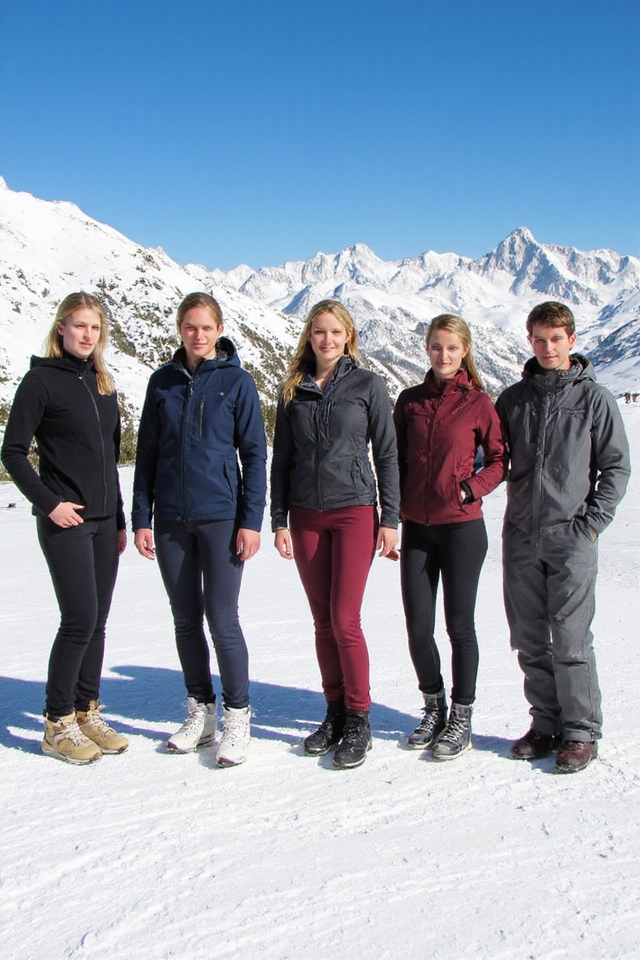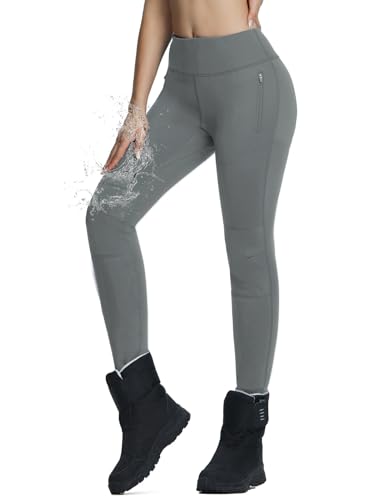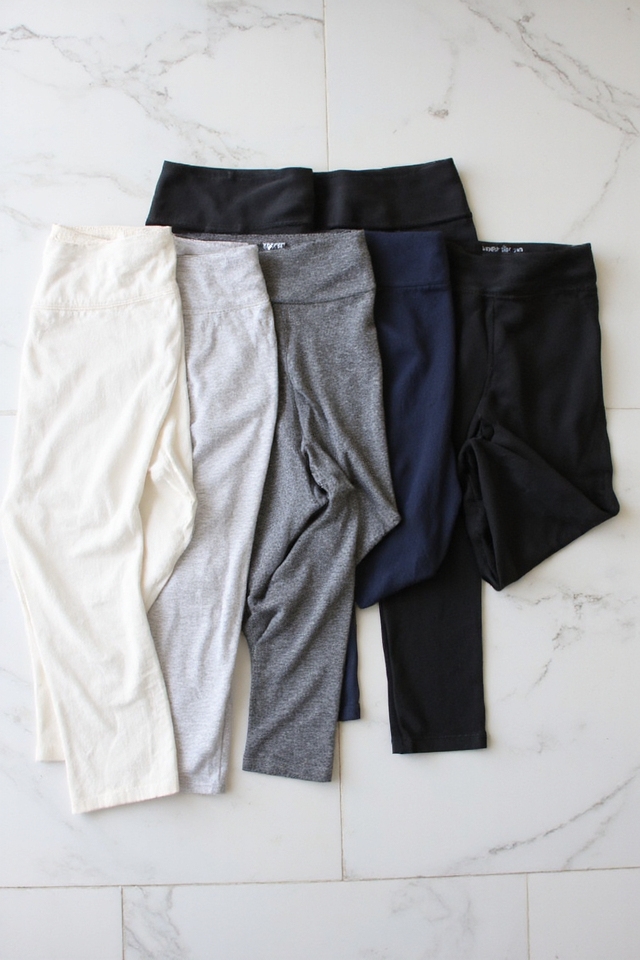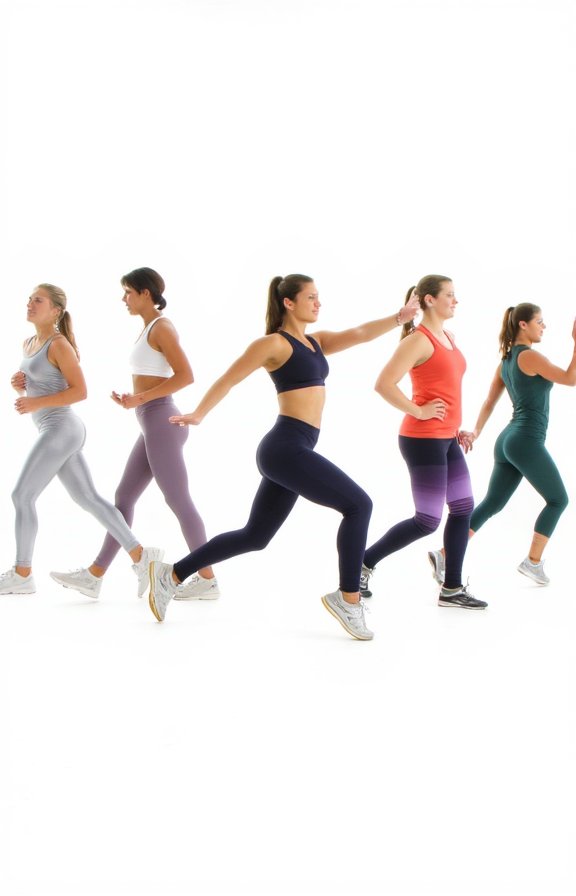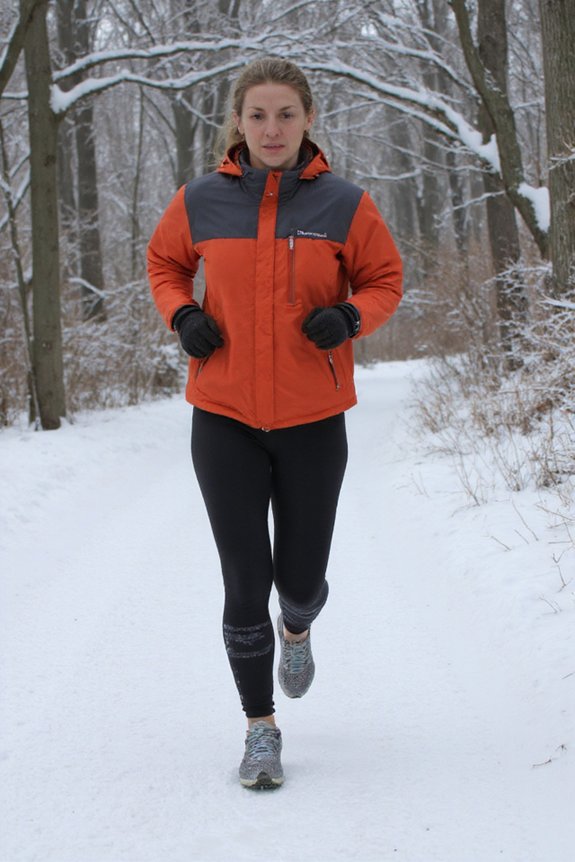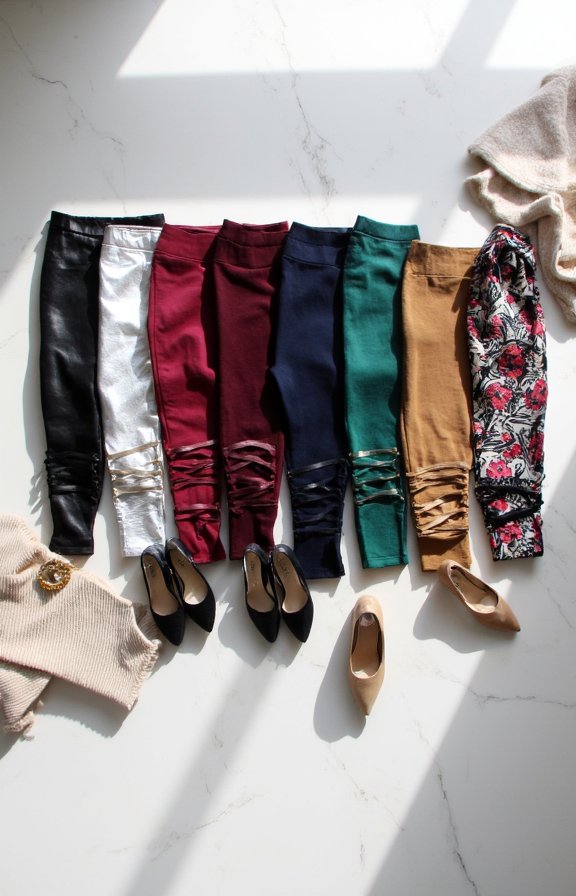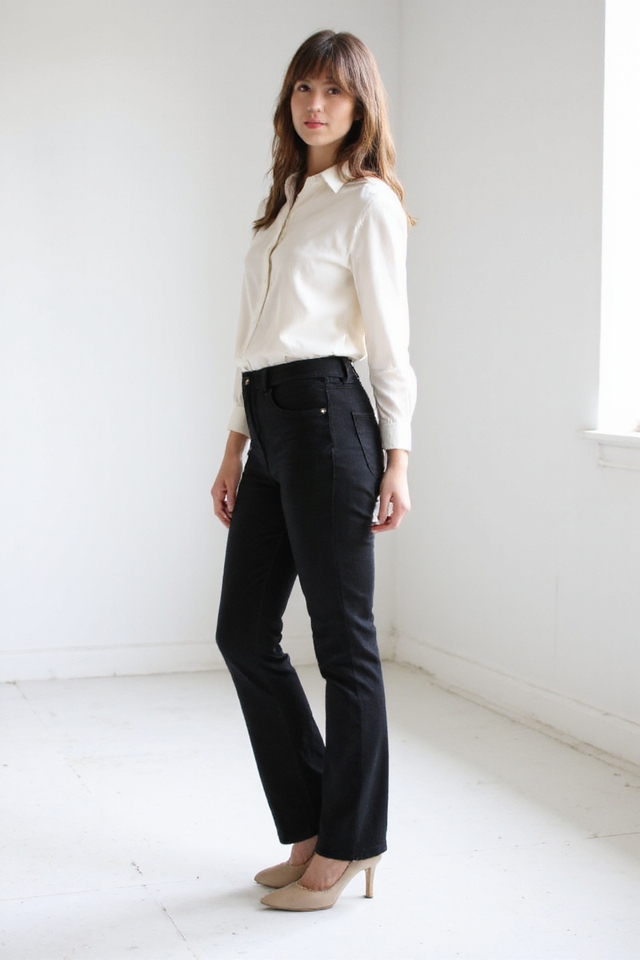You’ll dominate the slopes with these five game-changing ski legging styles. PrimaLoft insulated leggings trap heat while staying lightweight, compression styles boost muscle performance and recovery, fleece-lined options deliver plush warmth without bulk, thermal moisture-wicking fabrics regulate temperature during intense runs, and full-coverage bibs eliminate waist gaps in deep powder. Each style tackles specific mountain challenges, from brutal wind chills to all-day endurance demands. Let’s explore which combination transforms your winter ski experience.
Insulated Ski Leggings With Primaloft Technology
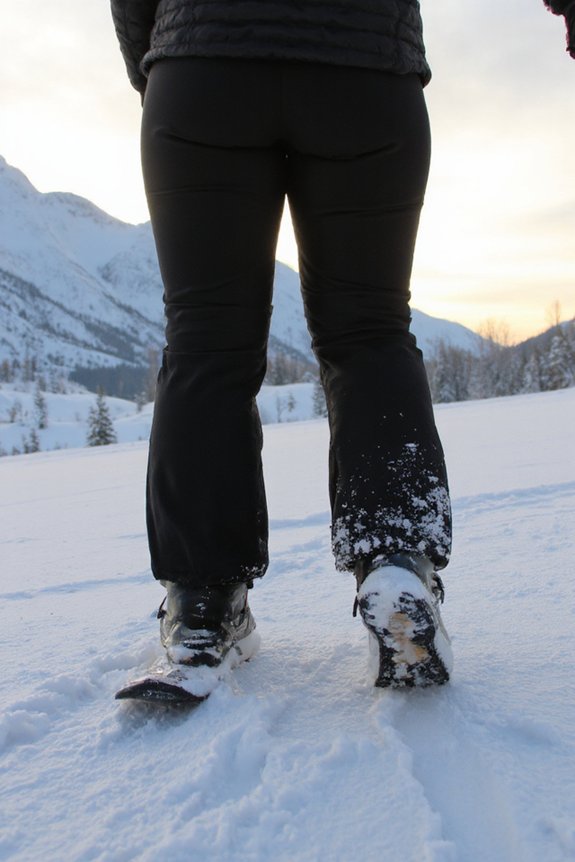
When you’re hitting the slopes in freezing temperatures, you’ll want insulated ski leggings with PrimaLoft technology to keep your legs toasty warm.
This synthetic insulation traps body heat while staying lightweight and compressible. You’ll love how these leggings move with you during intense runs.
They’re perfect under shell pants or worn solo on warmer days. The moisture-wicking fabric keeps you dry too.
Compression Ski Leggings for Enhanced Performance
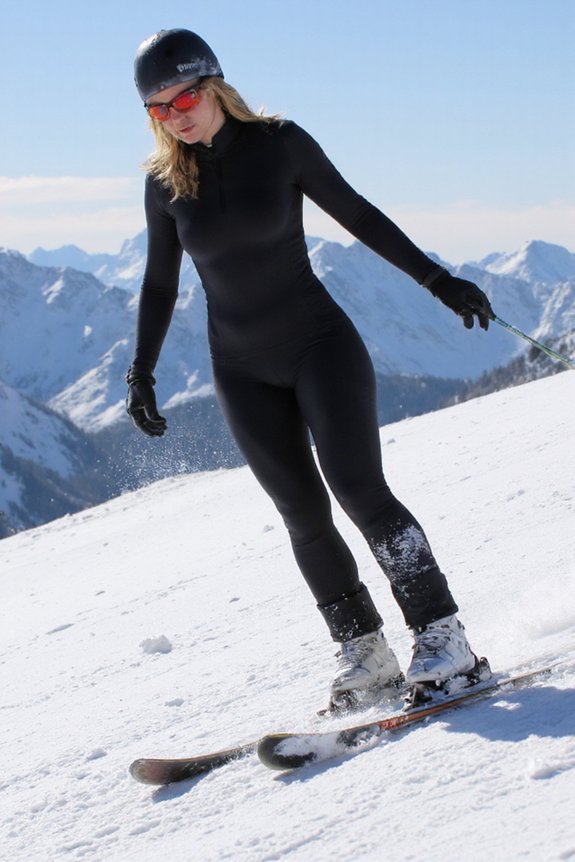
For serious skiers who want to maximize their slope time, compression ski leggings offer a whole new level of muscle support and recovery benefits.
You’ll feel the targeted pressure zones working instantly, reducing fatigue in your quads and calves. The graduated compression technology boosts blood flow, so you’re ready for run after run.
Pair them with lightweight shells for unbeatable performance that’ll transform your skiing endurance completely.
Fleece-Lined Leggings for Maximum Warmth
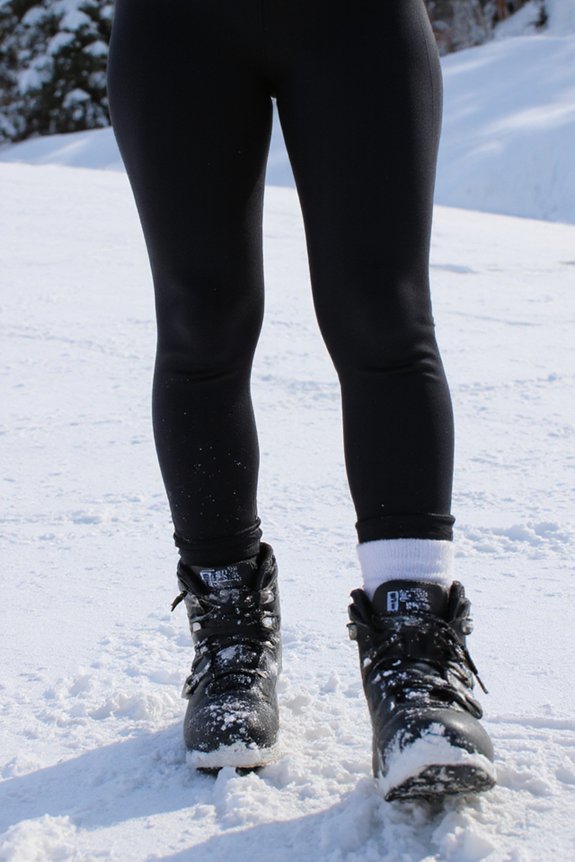
Nothing beats the cozy warmth of fleece-lined ski leggings when temperatures drop below freezing on the mountain.
You’ll appreciate the plush interior that traps body heat while maintaining sleek silhouettes under your ski pants.
Choose high-loft fleece options with moisture-wicking properties, and pair them with merino wool socks for ultimate thermal protection.
They’re crucial when you’re facing brutal wind chills.
Thermal Moisture-Wicking Ski Leggings

While fleece-lined leggings excel at trapping heat, thermal moisture-wicking ski leggings take performance to the next level by actively managing sweat during intense runs.
You’ll stay dry and comfortable even during aggressive downhill sessions. Look for merino wool blends or synthetic fabrics with four-way stretch.
They’ll regulate your body temperature beautifully, keeping you warm when you’re cold and cool when you’re working hard.
Full-Coverage Ski Bibs and Leggings
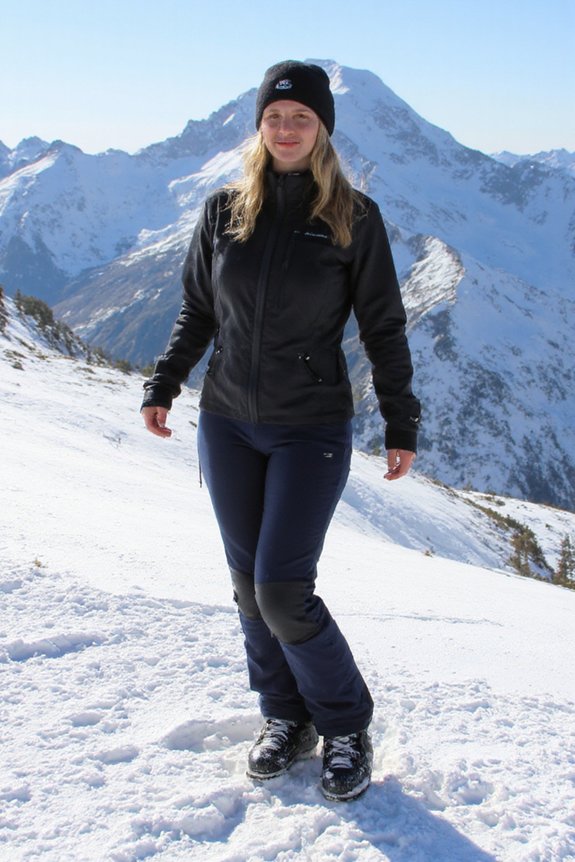
When you’re facing extreme cold or deep powder days, full-coverage ski bibs paired with leggings offer unbeatable protection and warmth.
You’ll love how the high-waisted design shields your core while eliminating gaps at the waist.
Layer merino leggings underneath for double insulation, and choose bibs with adjustable straps for a custom fit.
This combo keeps snow out and body heat in perfectly.
Frequently Asked Questions
Can Ski Leggings Be Worn as Standalone Pants Without Shell Layers?
Yes, you can absolutely wear ski leggings as standalone pants!
Today’s technical ski leggings feature windproof, water-resistant fabrics that’ll keep you warm and dry.
Look for styles with reinforced knees, boot gaiters, and side venting. They’re perfect for mild ski days, cross-country adventures, or après-ski activities.
Just make sure you’re choosing true ski leggings with proper insulation and weather protection, not basic athletic tights marketed for skiing.
How Do I Properly Care for and Wash Technical Ski Leggings?
You’ll want to wash your technical ski leggings inside-out in cold water with sport-specific detergent.
Skip the fabric softener—it’ll ruin the moisture-wicking properties you need.
Machine wash on gentle, then air dry flat or hang them up.
Never use high heat in the dryer, as it breaks down the stretchy fibers.
For stubborn odors, pre-soak in vinegar water.
These simple steps keep your investment pieces performing season after season.
What’s the Ideal Temperature Range for Each Ski Legging Style?
You’ll want to match your leggings to the conditions.
For mild days around 32-40°F, lightweight merino wool works perfectly.
When it drops to 20-32°F, grab your fleece-lined or midweight synthetic pairs.
Below 20°F? That’s when you need heavyweight thermal leggings with windproof panels.
Are Ski Leggings Suitable for Other Winter Activities Besides Skiing?
You’ll love how versatile ski leggings are for your entire winter wardrobe.
They’re perfect for ice skating, snowshoeing, winter hiking, and even sledding with the kids. The moisture-wicking fabric keeps you dry during any outdoor activity, while the thermal insulation works whether you’re building snowmen or walking the dog.
Layer them under jeans for extra warmth during holiday shopping, or wear them solo for winter morning runs. They’re your go-to cold-weather necessity.
How Long Do Quality Ski Leggings Typically Last With Regular Use?
You’ll get about three to five seasons from quality ski leggings with regular use.
If you’re hitting the slopes every weekend, expect closer to three years.
Premium brands with reinforced seams and high-performance fabrics last longer.
You’ll know it’s time to replace them when the fabric thins at stress points, loses its stretch recovery, or the water-resistant coating starts failing.
Proper care, like cold washing and air drying, extends their lifespan considerably.
